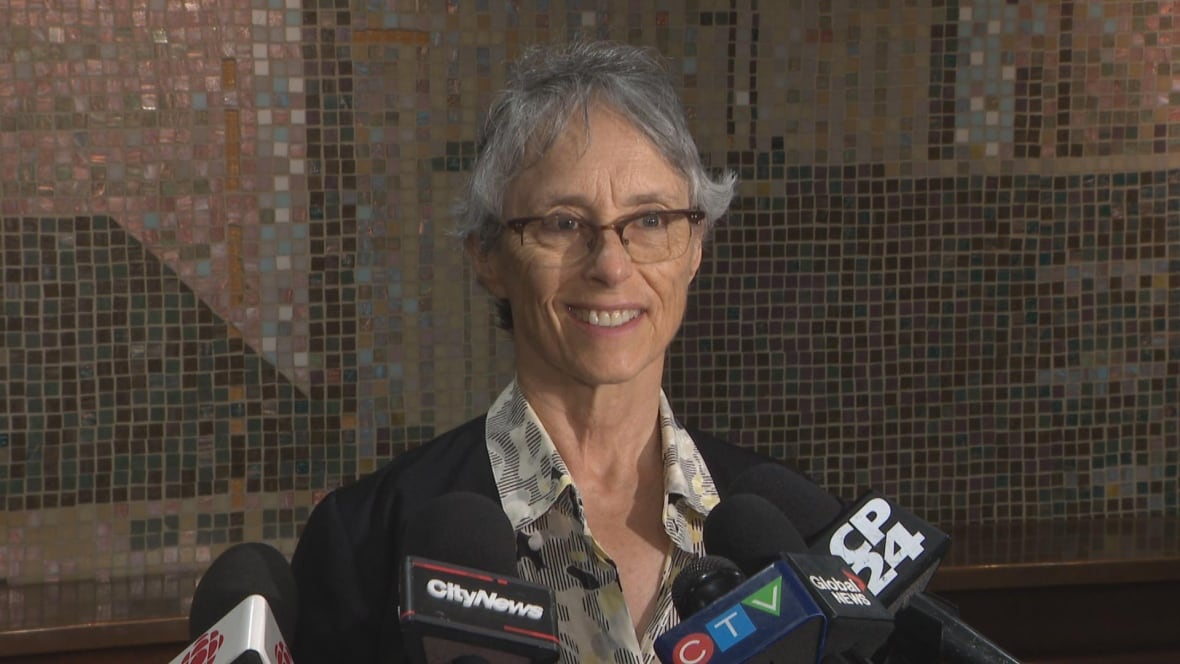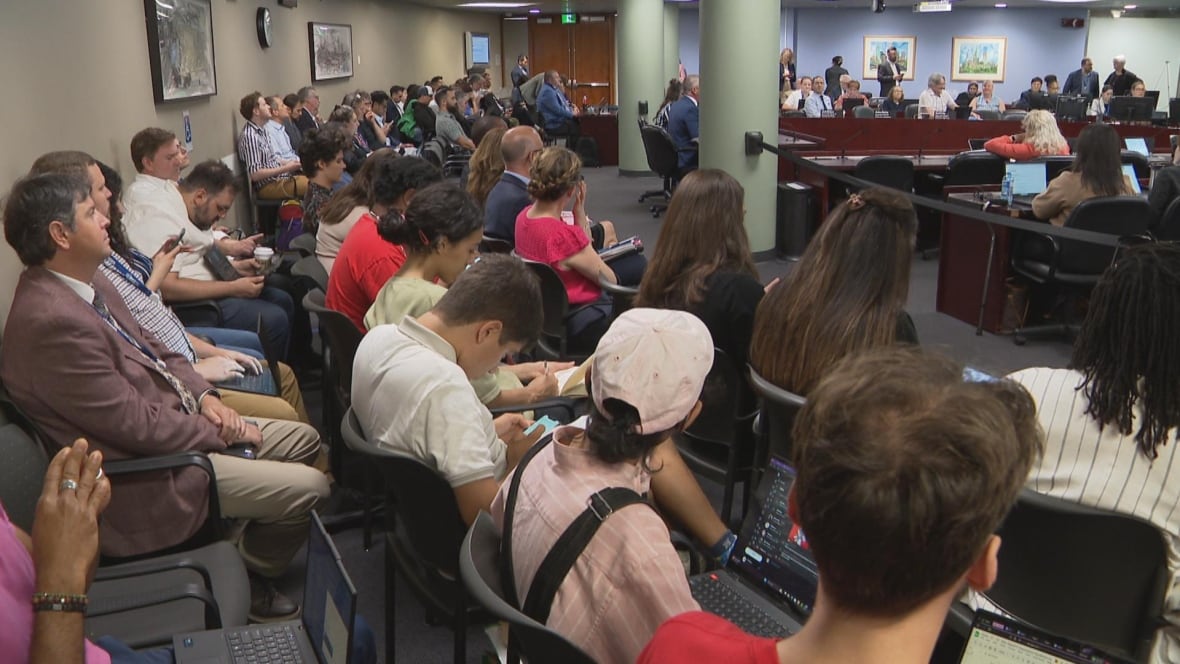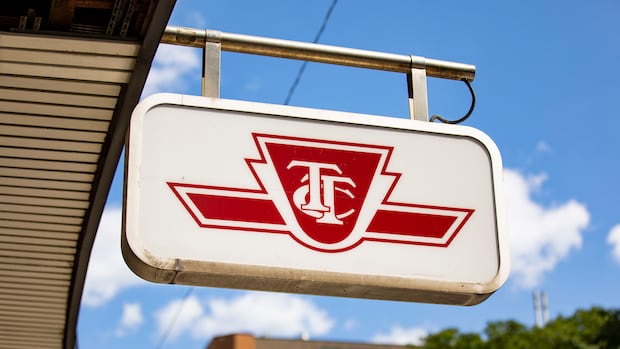Toronto could see bus-only lanes on Dufferin and Bathurst streets ahead of the 2026 FIFA World Cup
Activists argued both for and against proposed RapidTO plan at committee meeting Wednesday
Dozens of people lined up to debate the future of priority bus lanes at an executive committee meeting Wednesday, where city councillors ultimately voted to move forward with a plan to install bus-only lanes on Bathurst and Dufferin streets south of Bloor Street W.
The Surface Transit Network Plan, dubbed RapidTO, is a city initiative with the Toronto Transit Commission that aims to implement the priority transit lanes.
Previously, the RapidTO plan proposed the lanes extend up to Eglinton Avenue W. A scaled back version of the original plan was presented by city staff at the committee meeting Wednesday.
But Toronto Mayor Olivia Chow is hoping to revert the plan back to its initial design, recommending that the Dufferin Street bus-only lane continue all the way north to Wilson Station and the Bathurst Street bus-only lanes extend to Eglinton Avenue W.
"Congestion is a problem in the city," Chow said at a news conference ahead of the meeting. "Nothing has as large an impact as better public transit."
At the meeting, city staff reported the watered-down version of RapidTO would save five minutes in total on Dufferin Street and three minutes on the Bathurst Street bus route, making them 29 and 13 per cent faster, respectively. An estimated 6,000 people ride the Dufferin bus and 3,000 drive on the route during morning peak hours, staff said.
If implemented, the plan could bring in up to 21,000 new riders, Chow added.
Residents torn on the idea
The vote to pass the motion came after hours of deputations, both in favour of and against the implementation of the priority traffic lanes.
Protect Bathurst is a group of residents and business owners who oppose RapidTO developments. Spokesperson Paul Macchiusi says the figures aren't adding up and that there hasn't been enough consultation with the residents of the neighbourhoods where the lanes would be implemented.

He also said the removal of parking spots for the bus-only lanes would impact business for local stores. Instead, Macchiusi suggested implementing high-occupancy vehicle lanes and turning restrictions during peak rush hours.
Andrew Pulsifer, executive director of TTCRiders, a transit advocacy organization, says that is simply not true.
"Transit users shop too. And I just can't imagine that bus lanes allowing more people to access your store would have that much of an impact on your sales," he said.
For far too long, transit users have been placed on the back-burner, Pulsifer says.
"Transit users do feel like they're being told 'no' a lot these days. No, you'll have to live with slow zones. No, overcrowding is just a fact of life. No, we can't afford to run buses more often," he said.
Pulsifer and others supporting the motion are asking for clearer timelines on the mayor's motion to investigate the feasibility of bus-only lanes north of Bloor Street W.
Many businesses say they need parking
Councillors are just as divided as constituents. University-Rosedale Coun. Dianne Saxe, whose ward includes Bathurst Street, says she's spent time consulting with her community and a scaled back version of the original RapidTO plan is more beneficial.

"It makes sense to try first just clearing the eastbound lane, which we can do with parking in turn changes, extending the no stopping zone, and see if that solves the problem," she said.
Saxe added that there are 60 businesses on Bathurst Street between Bloor Street W. and Dupont Street.
"They've made a pretty credible case to me that they need some access to parking and that at the moment there are very few options for them if there is no parking ever 24/7 on Bathurst," she said.
But Davenport Coun. Alejandra Bravo, whose ward includes Dufferin Street, says she's also spoken to her residents and the vast majority believes bus lanes are a priority.

"People being stuck on a bus that's moving an average of 10 km/h is really bad. It's bad politics, it's bad policy," she said Wednesday. "It's not [a] good use of public dollars. It's bad for the climate. And people get to work late, they get to school late. That's not good for the local economy either."
Bravo and Saxe both made recommendations to the staff to look into safety concerns for pedestrians, loading zones and alternative parking.
300,000 visitors expected for 2026 FIFA World Cup
The Toronto Region Board of Trade (TRBT) agrees, saying in a post on LinkedIn Tuesday that congestion is the top challenge facing the city.
"We recommend that City officials revisit and expand the proposed #RapidTO plan to include a connection to Eglinton," the post read.
It added that while businesses have raised concerns about the reduced car access, their main problem is, in fact, gridlock.
"We must move forward with bold, evidence-based solutions to get people and goods moving efficiently along Toronto's vital arterial roads," TRBT's president and CEO Giles Gherson said.
The motion to adopt priority-access lanes on Bathurst and Dufferin Streets will be presented at city council next week.
If passed, Toronto could see bus and streetcar-only lanes ahead of the six 2026 FIFA World Cup games the city is hosting, which Chow says could bring in up to 300,000 visitors.


